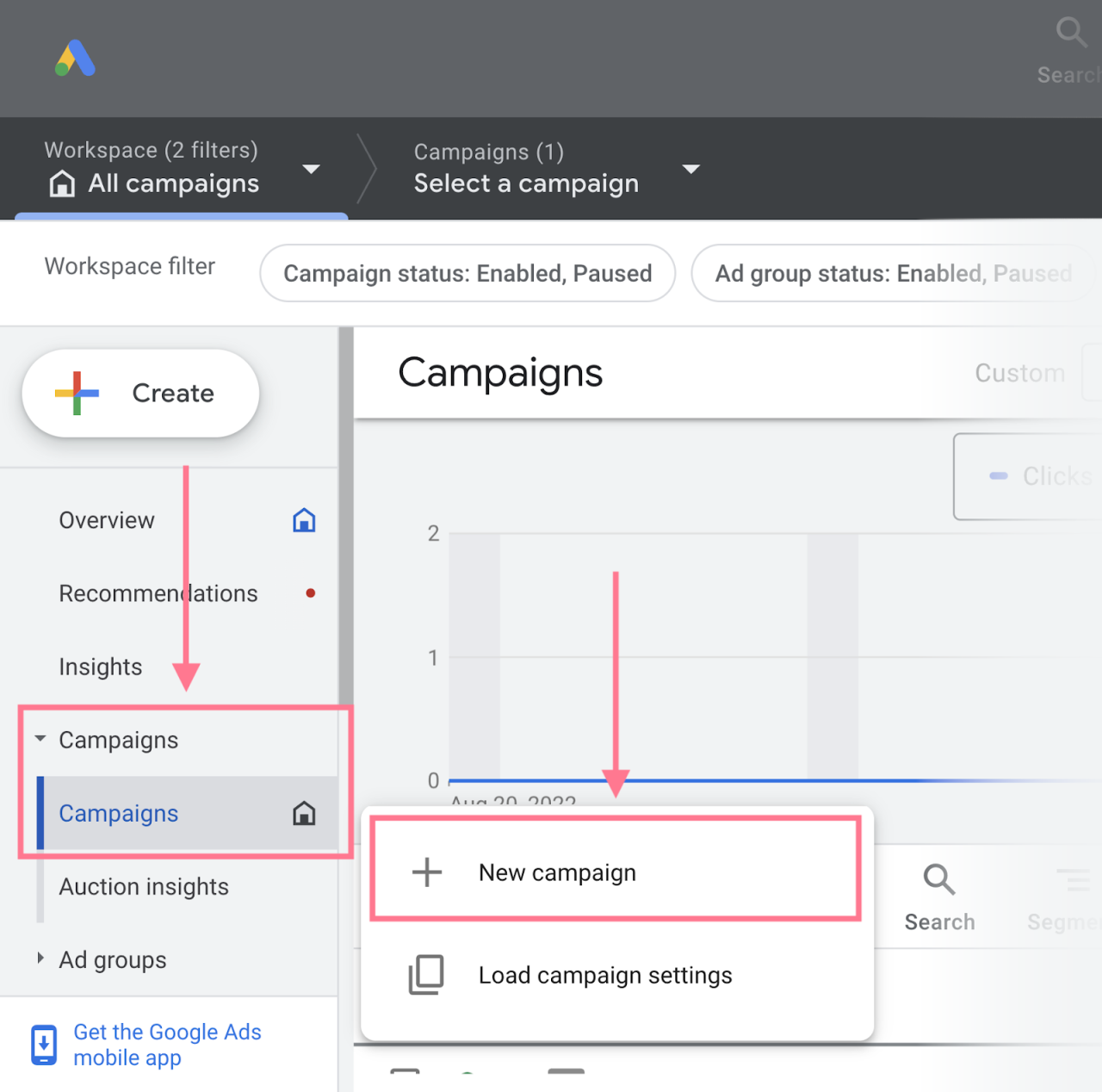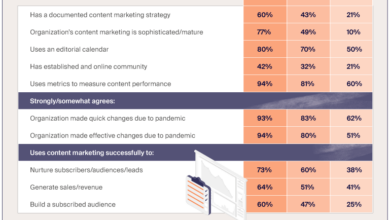
Google Display Network Your Visual Advertising Guide
Google Display Network opens up a world of visual advertising possibilities. This powerful platform lets you reach audiences beyond search results, using engaging images, videos, and interactive ads across a vast network of websites and apps. Understanding its intricacies is key to maximizing your advertising impact.
This guide delves into the Display Network, exploring everything from targeting options and ad formats to performance metrics and advanced strategies. We’ll cover the essential elements to help you craft successful campaigns, maximizing your return on investment.
Introduction to the Google Display Network

The Google Display Network (GDN) is a vast collection of websites, apps, and videos that partner with Google to display ads. It’s a crucial component of Google’s advertising ecosystem, connecting advertisers with a massive audience across the internet. This network leverages Google’s vast reach and user data to target ads effectively.The GDN is more than just a platform for placing ads; it’s a powerful tool for reaching specific demographics, interests, and behaviors.
By strategically utilizing the Display Network, businesses can significantly expand their brand visibility and drive conversions.
Different Types of Ads on the Display Network
The GDN supports a variety of ad formats, allowing advertisers to tailor their campaigns to various needs and objectives. This flexibility is a key strength of the platform. Different ad formats cater to different marketing goals, from brand awareness to direct sales.
- Image Ads: These are the most common type of display ads, featuring static or animated images. They are visually engaging and effective for conveying brand messaging and product information. These ads are highly customizable and can be easily adapted to different contexts.
- Video Ads: Video ads are becoming increasingly popular on the GDN, allowing for more dynamic and engaging content. They can be a powerful tool for capturing attention and conveying complex messages.
- Interactive Ads: These ads go beyond static visuals, providing users with an interactive experience. They often incorporate features like games, quizzes, or polls, making them more engaging and memorable. The level of interaction offered makes them more appealing to viewers than simpler image ads.
- Text Ads: Although less visually prominent, text ads remain a valuable tool for targeting specific s and interests. They are especially effective when integrated with other ad formats.
Ad Format Comparison
Each ad format offers unique advantages and disadvantages. Choosing the right format depends on the campaign objectives and target audience.
- Image Ads: Strong visual impact, easily understood, and cost-effective for basic messaging. However, they may lack the dynamism of video or interactive ads. A static image ad may be less effective in capturing the viewer’s attention compared to a video.
- Video Ads: Captivating and engaging, often delivering more impact than static images. However, video ads require more resources (production, editing) and may have higher costs. They may not be suitable for all contexts, such as sites with limited bandwidth.
- Interactive Ads: Highly engaging, offering a more personalized experience for the user. They can effectively drive higher engagement rates. However, their complexity might necessitate more development time and resources compared to simple image ads.
- Text Ads: Excellent for targeting specific s and offering concise information. They’re a low-cost alternative for conveying key details. They might be less impactful in terms of visual appeal, particularly when compared to video ads.
Ad Sizes and Dimensions
The Display Network supports a wide range of ad sizes, enabling advertisers to tailor their ads to fit various placements. The right size is crucial for maximizing visibility and impact.
| Ad Type | Width (pixels) | Height (pixels) | Description |
|---|---|---|---|
| Leaderboard | 728 | 90 | A large, horizontal banner suitable for prominent placement at the top of a page. |
| Medium Rectangle | 300 | 250 | A popular standard size, often used in sidebars or within content areas. |
| Small Rectangle | 120 | 60 | A compact ad unit, suitable for smaller placements and limited space. |
| Mobile Banner | 320 | 50 | A smaller format designed specifically for mobile devices. |
Targeting and Audience Reach on the Display Network

The Google Display Network (GDN) offers a vast landscape of opportunities for advertisers to connect with their ideal audience. Beyond simply displaying ads, the power lies in the granular control over who sees those ads. This precision targeting is what sets the GDN apart and allows for significant ROI. By understanding the various targeting options, advertisers can dramatically improve the effectiveness of their campaigns.Advertisers can leverage the GDN’s extensive reach to showcase their products or services to highly receptive audiences.
This targeting goes beyond basic demographics and delves into the specifics of user interests and behaviors. Understanding how these targeting options work is key to maximizing the potential of the GDN.
Targeting Options Available on the Display Network
The Display Network offers a comprehensive suite of targeting options, enabling advertisers to precisely reach their desired audience segments. These options include demographic targeting, interest-based targeting, and behavioral targeting, allowing for tailored campaigns.
Demographic Targeting
Demographic targeting allows advertisers to reach specific segments based on characteristics like age, gender, income, education level, and household composition. This targeted approach enables advertisers to focus their ad spend on audiences most likely to be interested in their products or services. For example, a company selling luxury cars might target high-income individuals in specific age ranges.
Interest-Based Targeting
Interest-based targeting is a powerful tool that allows advertisers to reach users based on their expressed interests, hobbies, and online activities. This method ensures that ads are shown to individuals who are actively engaged in areas related to the advertised product or service. For instance, a company selling gardening supplies could target users who frequently visit gardening websites or forums.
Behavioral Targeting, Google display network
Behavioral targeting is a sophisticated method for reaching users based on their online actions, including websites visited, products viewed, and searches conducted. This allows advertisers to connect with users who have demonstrated a specific interest or need. A company selling travel packages could target users who have previously searched for flights or hotels.
Remarketing
Remarketing is a powerful feature within the Display Network that allows advertisers to re-engage users who have previously interacted with their website or app. This feature is crucial for converting leads into customers. By targeting users who have shown an interest in a product or service, advertisers can remind them of the offering and potentially drive conversions. For example, a user who browses a clothing website but doesn’t purchase anything can be targeted with ads for similar products or special offers.
Audience Segmentation and Targeting Methods
The Display Network provides robust tools for segmenting and targeting audiences. These methods utilize data to create detailed user profiles, enabling precise ad placement.
- Custom Audiences: Advertisers can upload their customer lists or website data to create custom audiences. This ensures that ads are shown to users who have already expressed an interest in the products or services.
- Affinity Audiences: These audiences are based on shared interests and behaviors. Advertisers can target users who are passionate about specific topics, such as sports or fashion.
- In-Market Audiences: These audiences consist of users actively researching or considering purchasing a particular product or service. Targeting these audiences is essential for driving conversions.
Examples of Successful Targeting Strategies
Successful targeting strategies on the Display Network often combine multiple targeting methods to create a highly focused and effective campaign. For instance, a travel agency might use interest-based targeting to reach users interested in adventure travel, combine it with behavioral targeting to identify users who have previously searched for flights to specific destinations, and further refine the targeting by including custom audiences of past clients.
Ad Formats and Creative Considerations
The Google Display Network (GDN) offers a wide array of ad formats, enabling advertisers to connect with their target audience through various engaging experiences. Understanding these formats and crafting compelling visuals is crucial for maximizing campaign performance. This section delves into the diverse ad formats available, best practices for creating effective visuals, and the importance of responsive design.
The Google Display Network is a powerful tool for reaching a wider audience, but optimizing your campaigns for search engine visibility is key. A solid understanding of schema markup, like the one found in ultimate guide to schema for seo , can significantly boost your organic visibility and drive more qualified traffic to your site, ultimately improving your results on the Google Display Network.
Different Ad Formats Supported
The GDN supports a variety of ad formats beyond static images. This flexibility allows advertisers to cater to different user experiences and campaign objectives. These formats range from simple image ads to interactive experiences and video.
- Image Ads: These are the most common format, featuring static images. They are cost-effective and relatively easy to create. However, their effectiveness hinges on compelling visuals and concise messaging. Image ads are highly versatile and can be used to showcase products, services, or promotions.
- Video Ads: Videos can effectively capture attention and convey information more dynamically. They provide a more engaging experience than static images, allowing for storytelling and demonstrations. Consider using short, attention-grabbing video clips optimized for mobile viewing. The use of eye-catching visuals and a clear call-to-action are critical for success.
- Interactive Ads: These ads allow users to engage with the ad directly, potentially leading to higher click-through rates and conversions. Examples include interactive quizzes, games, or polls, which can increase user interaction.
- Rich Media Ads: These ads utilize various interactive elements, including animations, video overlays, and other interactive features. They can be more engaging than static image ads, but should be carefully designed to avoid overwhelming the user experience.
Best Practices for Engaging Visuals
Crafting effective visuals is paramount for Display Network ads. A strong visual draws attention and conveys the message effectively. Clear visuals, concise text, and a compelling call-to-action are essential for driving user engagement.
- High-Quality Images and Videos: Use high-resolution images and videos with clear details and sharp contrast. Ensure your visuals are optimized for different screen sizes and resolutions to ensure optimal display on various devices.
- Compelling Visuals: Use eye-catching imagery and graphics that resonate with your target audience. The visuals should reflect your brand and appeal to the interests of your target users. Consider using high-contrast colors and bold typography.
- Concise Messaging: Use short, impactful text that communicates your message clearly and concisely. Include a clear call-to-action that directs users to the desired landing page.
- Consistency with Brand Identity: Ensure your ad visuals align with your brand identity. This includes using consistent colors, fonts, and imagery across all your ads.
Examples of Compelling Ad Creatives
Successful ad creatives often feature a strong visual component, clear messaging, and a well-defined call-to-action. Examples include ads from companies like Nike or Apple that consistently deliver engaging experiences. These ads demonstrate how visually appealing content can effectively engage users and drive conversions.
Importance of Responsive Design
Responsive design ensures that your ads adapt to various screen sizes and resolutions, ensuring optimal viewing experiences across different devices. This adaptability is critical for maximizing reach and engagement on the Display Network, as users interact with ads on a variety of devices.
A/B Testing Method
A/B testing involves creating variations of your ad creatives (A and B) and comparing their performance. This method allows you to identify which creative performs better in terms of click-through rates, conversions, and other relevant metrics.
- Create Variations: Create two or more versions of your ad creatives that differ in elements such as visuals, text, or call-to-action.
- Run Experiments: Run the variations in your campaigns for a defined period. Monitor key performance indicators (KPIs) such as click-through rates and conversions.
- Analyze Results: Analyze the data to identify which variation performs better. Select the higher-performing variation and implement it for wider use.
Measurement and Performance Metrics
Unlocking the true potential of your Google Display Network campaigns hinges on meticulous measurement and analysis. Understanding how your ads perform across the vast landscape of the Display Network is crucial for optimizing your spend and achieving desired outcomes. Effective measurement goes beyond simply tracking clicks; it involves deep dives into user engagement, conversions, and overall campaign ROI.Analyzing campaign data empowers you to make informed decisions, refine your targeting, and optimize your ad creatives.
This allows for a more targeted approach, ensuring your advertising budget is effectively allocated. The right metrics can reveal which aspects of your campaign are driving success and which areas need improvement.
Key Performance Indicators (KPIs)
Several KPIs are essential for gauging the success of your Display Network campaigns. These metrics provide a comprehensive view of campaign performance, allowing for a nuanced understanding of what’s working and what’s not.
- Impressions: The number of times your ads were displayed to users. High impressions indicate broad reach, but don’t equate to success on their own. They’re a foundational metric for understanding your campaign’s visibility. Consider the context of the impressions, such as the quality of the websites where your ads appear.
- Clicks: The number of times users clicked on your ads. Click-through rate (CTR) is a valuable metric that directly relates impressions to engagement. A higher CTR suggests your ads are compelling and relevant to the audience.
- Conversion Rate: The percentage of clicks that resulted in desired actions, like purchases or sign-ups. Conversion rate is a vital metric for evaluating the effectiveness of your ads in driving conversions, a crucial element for measuring return on investment (ROI). Consider what specific actions constitute a conversion for your business.
- Cost Per Click (CPC): The average cost you pay each time a user clicks on your ad. Optimizing CPC is crucial for controlling your advertising budget and maximizing ROI.
- Cost Per Acquisition (CPA): The average cost to acquire a customer or user through your Display Network campaigns. CPA directly relates your advertising cost to the value of the resulting action, providing a valuable metric for assessing profitability. A lower CPA is generally more desirable.
Tools and Resources for Tracking Performance
Google Ads provides a robust suite of tools for tracking campaign performance.
- Google Ads interface: The platform offers comprehensive dashboards for monitoring key metrics like impressions, clicks, conversions, and costs. The intuitive interface enables easy navigation and insightful data visualization.
- Conversion Tracking: Set up conversion tracking in your Google Ads account to accurately measure the results of your Display Network campaigns. This feature allows you to tie clicks to specific actions, enabling a precise calculation of ROI.
- Google Analytics: Integrate Google Analytics with your Google Ads account to gain a more holistic view of user behavior. This integration provides valuable insights into user engagement, website traffic, and conversions. Analyze the data from both platforms to create a more complete picture.
- Custom Reports: Utilize custom reports to create personalized dashboards and track the metrics most relevant to your business. This feature allows for deeper analysis and a more tailored approach to campaign optimization.
Analyzing Data for Optimization
Analyzing campaign data is key to refining targeting and ad creative strategies.
- Identify Trends: Look for patterns in your data to understand which ad creatives, targeting options, and placements perform best. Identify high-performing elements and understand the reasons for their success.
- A/B Testing: Experiment with different ad creatives, headlines, and calls to action to identify what resonates best with your target audience. This iterative process helps optimize your campaigns over time.
- Adjust Targeting: Based on data, refine your targeting criteria to reach a more engaged and qualified audience. This could involve adjusting demographics, interests, or even specific websites.
- Refine Ad Creatives: If certain ad creatives are underperforming, modify them to better align with the preferences of your target audience. This might involve adjusting visuals, messaging, or calls to action.
Display Network vs. Search Network
The Google Ads platform offers two primary networks for advertisers: the Search Network and the Display Network. Understanding their distinct characteristics and strengths is crucial for crafting effective campaigns. Choosing the right network, or using a combination, depends heavily on the specific goals and target audience of the campaign.The Search Network is driven by user intent. Users actively seek information or solutions, while the Display Network focuses on broader reach and brand awareness, leveraging visual elements.
This fundamental difference in user behavior translates into different strategies and campaign structures.
Targeting Capabilities Comparison
Understanding the targeting options available in each network is vital. Different levels of specificity and control exist, impacting campaign performance and return on investment.
| Feature | Search Network | Display Network |
|---|---|---|
| s | Highly granular targeting based on specific s. | Less precise targeting. Uses topics, demographics, interests, and remarketing to reach broader audiences. |
| Demographics | Limited demographic targeting options based on broad categories. | Extensive demographic targeting options allowing for highly segmented audience reach. |
| Interests | Limited interest-based targeting. | Comprehensive interest-based targeting, allowing for precise targeting based on specific hobbies, activities, and passions. |
| Retargeting | Limited retargeting options. | Strong retargeting capabilities to reach users who have previously interacted with your website or ads. |
Strengths and Weaknesses of Each Network
Each network possesses unique strengths and weaknesses that influence campaign suitability.
- Search Network Strength: High conversion potential due to the direct nature of user intent. Users actively searching for a product or service are more likely to convert.
- Search Network Weakness: Limited brand awareness opportunities compared to the Display Network.
- Display Network Strength: Excellent for building brand awareness and reaching a broader audience. Visual elements can engage users and reinforce brand messaging.
- Display Network Weakness: Conversion rates are generally lower compared to the Search Network. Reaching the right audience with the right message requires meticulous targeting.
Campaign Examples
Effective campaigns often utilize a combination of both networks.
- Example 1: A software company could use the Search Network to target users actively searching for specific software solutions. Simultaneously, they could use the Display Network to reach a broader audience interested in software development and related topics, building brand awareness and driving interest.
- Example 2: A fashion retailer might target users actively searching for specific clothing items on the Search Network. However, they might also use the Display Network to reach a wider audience interested in fashion through targeted display ads across relevant websites and apps. This approach could increase brand visibility and attract new customers.
When to Choose Which Network
The choice between the Search and Display Networks depends on campaign objectives.
- Search Network: Ideal for campaigns focused on direct sales, lead generation, or conversions. Users are actively seeking a product or service, making this network highly effective for driving immediate results.
- Display Network: More appropriate for campaigns focused on brand awareness, reach, and building long-term relationships with potential customers. The network’s ability to reach a broad audience through visual elements makes it well-suited for building brand recognition and consideration.
Advanced Display Network Strategies: Google Display Network
Diving deeper into the Google Display Network (GDN) reveals a world of sophisticated strategies that go beyond basic targeting. These techniques leverage automation, advanced targeting methods, and emerging trends to optimize campaign performance and maximize return on investment. Understanding these advanced strategies is crucial for anyone looking to truly harness the power of the GDN.
The Google Display Network is a powerful tool for reaching potential customers, but optimizing it for maximum impact takes more than just setting up ads. Learning how to effectively leverage multiple marketing channels, like in a comprehensive multi-service case study, is key. A deep dive into strategies like those detailed in multi service case study reveals how combining different approaches can significantly boost campaign performance.
Ultimately, the Display Network is more effective when integrated into a broader, multi-faceted strategy.
Programmatic Advertising on the Display Network
Programmatic advertising is revolutionizing how advertisers interact with the GDN. Instead of manually placing ads, programmatic platforms use algorithms to buy ad space in real-time based on predefined criteria. This allows for greater efficiency, targeting precision, and cost-effectiveness. Advertisers can set specific parameters like audience demographics, interests, and website context, and the platform automatically places ads where they are most likely to be seen by the desired audience.
Automation and AI in Optimizing Display Network Campaigns
Automation and Artificial Intelligence (AI) are transforming campaign management on the Display Network. AI-powered tools can analyze vast amounts of data to identify patterns, predict user behavior, and optimize campaigns in real-time. This includes automated bidding strategies, dynamic creative optimization, and intelligent targeting adjustments, all aimed at maximizing ad impressions and conversions. For instance, AI can automatically adjust bids based on real-time performance data, ensuring that ad spend is allocated effectively.
Advanced Targeting Techniques
Advanced targeting methods allow advertisers to refine their reach beyond basic demographics. Contextual targeting focuses on displaying ads on websites or pages relevant to the advertised product or service. For example, if you sell gardening tools, contextual targeting might show your ads on gardening blogs or websites featuring home improvement projects. Affinity targeting goes a step further by targeting users based on their interests and passions.
If you are promoting a photography course, affinity targeting might show your ads on sites frequented by photography enthusiasts.
Emerging Trends in Display Network Advertising
The GDN is constantly evolving. One key trend is the increasing importance of video advertising. Short-form video ads are becoming more prevalent on the Display Network, allowing for dynamic and engaging experiences. Another notable trend is the rise of interactive ads, enabling users to directly interact with the advertisement and providing a more immersive experience. These advancements are driving greater user engagement and conversion rates.
Potential Challenges and Solutions
Implementing advanced strategies presents potential challenges. One such challenge is the complexity of programmatic platforms, requiring a deep understanding of the technology to effectively utilize them. To address this, ongoing training and education on programmatic advertising are crucial. Another challenge is ensuring data privacy compliance, as the increasing use of data necessitates careful adherence to regulations. This can be tackled by implementing robust data privacy policies and adhering to industry best practices.
Additionally, accurately measuring the effectiveness of advanced strategies can be difficult. Utilizing sophisticated analytics tools and setting clear performance metrics is essential for evaluating the ROI of advanced strategies.
Examples of Display Network Implementation
The Google Display Network (GDN) offers a vast array of opportunities for businesses to reach their target audiences. Its flexibility and diverse ad formats allow for tailored campaigns, from simple branding efforts to complex lead generation strategies. Effective implementation hinges on a deep understanding of the network’s capabilities and a clear definition of campaign objectives.Beyond broad targeting, successful GDN campaigns rely on meticulous audience segmentation and compelling ad creatives.
Careful consideration of ad formats, landing pages, and performance tracking are crucial for optimizing results. This section delves into practical examples of successful GDN campaigns across various industries, illustrating the potential of this powerful advertising platform.
Successful Display Network Campaign Example
A fitness apparel brand, “ActiveGear,” launched a GDN campaign focused on driving traffic to their online store. They utilized targeted audiences based on interests in fitness, athletic events, and specific workout types. Their ad creatives featured engaging visuals of people actively exercising, paired with compelling calls-to-action. The campaign also leveraged dynamic remarketing to re-engage users who had previously visited the website but hadn’t made a purchase.
The Google Display Network is a powerful tool for reaching a wide audience, but sometimes you need a more targeted approach. For boosting engagement, especially on video, consider exploring YouTube’s vast potential, like strategies discussed in youtube engagement. Ultimately, the Display Network’s effectiveness often hinges on integrating diverse platforms like YouTube for maximum impact.
Key performance indicators (KPIs) like click-through rates (CTRs) and conversion rates were meticulously tracked and analyzed. This iterative process led to significant improvements in ROI and a substantial increase in online sales. The campaign demonstrated the power of precise targeting and visually appealing ads in driving conversions within the GDN.
Case Study on Display Network Effectiveness
A major electronics retailer, “TechWorld,” successfully used the GDN to drive brand awareness and generate leads for their new line of smart home appliances. Their strategy included targeting users interested in home automation, smart devices, and DIY projects. The campaign employed various ad formats, including image ads, video ads, and interactive banners, each tailored to different stages of the user journey.
The retailer implemented a detailed tracking system to measure impressions, clicks, and leads generated through the Display Network. The campaign successfully increased brand recognition and generated a substantial number of qualified leads, resulting in a measurable return on investment (ROI).
Display Network Usage by Industries
Different industries leverage the GDN in distinct ways. Retailers often use it for product promotions and driving online sales. E-commerce businesses frequently utilize remarketing campaigns to re-engage past visitors. Financial institutions may use the network for targeted advertising to reach specific demographics. Educational institutions might leverage the network to attract prospective students.
Each industry has the potential to adapt the GDN to its unique objectives, leveraging its vast audience reach and varied ad formats to maximize effectiveness.
Example of a Display Network Campaign Structure
A campaign structure for a coffee shop targeting young professionals could include the following steps:
- Define Objectives: Increase brand awareness and drive foot traffic to the coffee shop.
- Target Audience: Young professionals (25-35) living in the city center, interested in coffee, work-related events, and nearby amenities.
- Ad Formats: Engaging banner ads featuring visually appealing coffee shots and scenes of busy urban life.
- Landing Page Optimization: Ensure the landing page is mobile-friendly, easy to navigate, and clearly highlights the shop’s location and offerings.
- Budget Allocation: Allocate a specific budget across different targeting groups and ad formats.
- Performance Tracking: Monitor key metrics like impressions, clicks, and store visits.
This example showcases a structured approach to a GDN campaign, highlighting the key steps involved in designing a successful campaign.
Campaign Types Within the Display Network
The Display Network supports a range of campaign types, each serving different objectives. The table below provides a brief overview:
| Campaign Type | Primary Objective | Typical Ad Formats |
|---|---|---|
| Brand Awareness | Increase brand visibility and recognition | Image ads, video ads, interactive banners |
| Performance-Based | Drive conversions and generate leads | Dynamic remarketing ads, product-listing ads, rich media ads |
| Retargeting | Reconnect with website visitors | Remarketing ads, personalized banners |
| Reach Campaigns | Reach a large audience with high frequency | Image ads, video ads, mobile ads |
This table illustrates the versatility of the Display Network and its suitability for various marketing goals.
Mobile Considerations in the Display Network
Mobile devices have become the primary way many people access the internet. This shift demands that advertisers adapt their strategies on the Google Display Network to effectively reach mobile users. Optimizing for mobile isn’t just about fitting ads on smaller screens; it’s about understanding mobile user behavior and tailoring campaigns to resonate with them. Ignoring mobile optimization can lead to missed opportunities and decreased ROI.Mobile users have different needs and expectations compared to desktop users.
They are often on the go, using their phones for various tasks, and seeking quick and relevant information. This requires advertisers to deliver concise, visually appealing ads that load quickly and provide value to the user. Mobile-friendly campaigns are crucial for maximizing engagement and conversion rates.
Importance of Mobile Optimization
Mobile optimization is essential for maximizing ad visibility and engagement on the Display Network. Mobile-friendly ads are more likely to be viewed and clicked, leading to higher conversion rates. It also enhances the overall user experience, promoting brand trust and positive associations. A well-optimized mobile campaign can significantly improve return on investment (ROI) by targeting a large segment of the audience and driving higher engagement rates.
Adapting Ad Formats and Creatives for Mobile
Mobile users expect a streamlined and intuitive ad experience. Ad formats should be concise and easy to interact with. Large, intrusive ads can be detrimental to the user experience and decrease engagement. The focus should be on creating ads that are visually appealing and mobile-friendly, while still delivering the intended message.Smaller, responsive ad units are crucial. Carousel ads, video ads (with optimized formats), and interactive formats are preferred choices.
Ensure your ad creatives are optimized for various screen sizes and orientations. Images and videos should be compressed to load quickly, and text should be legible without zooming.
Targeting Mobile Users Effectively
Targeting mobile users on the Display Network requires understanding their behaviors and preferences. Location-based targeting is crucial, allowing you to reach users in specific geographic areas. Demographic targeting and interest-based targeting are also essential, allowing for precision in targeting. Consider utilizing custom audiences to reach specific segments of mobile users. This includes looking at mobile apps, websites, and other relevant data points to create highly targeted campaigns.
Examples of Successful Mobile-Optimized Campaigns
Successful mobile-optimized campaigns often use responsive ad designs. They incorporate high-quality images and videos optimized for mobile viewing. A well-known example is a campaign for a mobile game app that utilized a series of carousel ads, showcasing various game features, with each ad tailored to the user’s mobile device. The success was attributed to high engagement rates and conversions from mobile users.
Ensuring Mobile Responsiveness Across Ad Formats
Ensuring mobile responsiveness across ad formats involves creating adaptive creatives. Using responsive design principles is critical. Utilize tools and platforms that allow for automatic resizing of images and ad elements to different screen sizes. Aligning ad sizes to the screen dimensions ensures an optimal experience. Using dynamic creative optimization is another key component, allowing for the automated testing and implementation of different ad variations to find the most effective format for different audiences.
Closing Notes
In conclusion, the Google Display Network offers a multifaceted approach to visual advertising, empowering businesses to connect with their target audiences in dynamic and engaging ways. Mastering targeting, ad creation, and performance measurement will unlock the full potential of this platform. This comprehensive overview equips you to navigate the complexities and achieve remarkable results.





